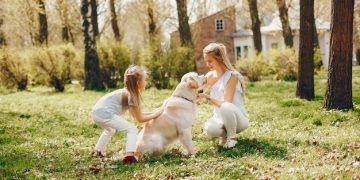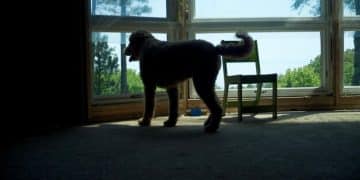Fear of Fireworks: A Guide to Desensitizing Your Dog
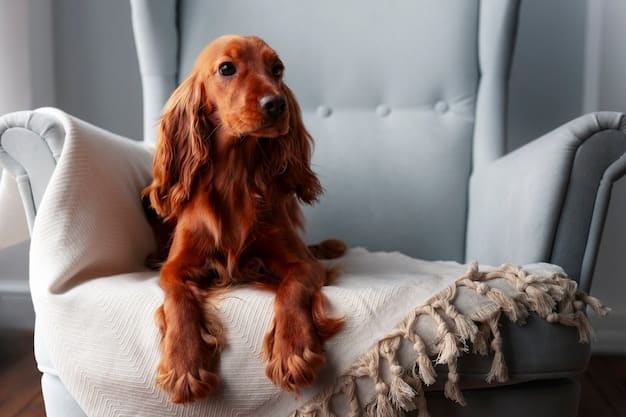
Anúncios
Desensitizing your dog to the fear of fireworks involves a gradual process of exposing them to the sounds in a controlled and positive manner, ultimately helping them to remain calm and relaxed during the next July 4th celebrations.
Is your dog terrified of fireworks? Don’t let July 4th be a stressful time for your furry friend. This guide will help you fear of fireworks: desensitize your dog before the next July 4th.
Anúncios
Understanding Your Dog’s Fear of Fireworks
Many dogs experience anxiety and fear when exposed to the loud noises and bright flashes of fireworks. Understanding the root of this fear is the first step in helping your dog cope.
Dogs have significantly more sensitive hearing than humans, making the sudden, loud booms of fireworks particularly overwhelming. Additionally, they lack the cognitive ability to understand that fireworks are not a genuine threat, leading to a pronounced fear response.
Anúncios
Why Are Dogs Afraid of Fireworks?
Several factors contribute to a dog’s fear of fireworks. These can include genetics, past experiences, and learned behaviors. Identifying the specific triggers for your dog can help tailor a desensitization plan.
- Sensitive Hearing: Dogs can hear frequencies that humans can’t, amplifying the impact of loud noises.
- Startle Response: The sudden nature of fireworks triggers a heightened startle response in dogs.
- Negative Associations: Past negative experiences with loud noises can create a lasting fear.
- Lack of Understanding: Dogs don’t understand the context of fireworks, perceiving them as a threat.
Recognizing these factors allows you to approach your dog’s fear with empathy and understanding, making the desensitization process more effective and less stressful for both of you.
Creating a Safe and Comfortable Environment
Providing a safe and comfortable environment is crucial for managing your dog’s anxiety during fireworks displays. This involves creating a secure space where they can retreat and feel protected.
A designated “safe zone” can be a crate, a quiet room, or even under a bed. Equip this space with familiar items, such as their favorite bed, toys, and a blanket that smells like you, to provide a sense of security.
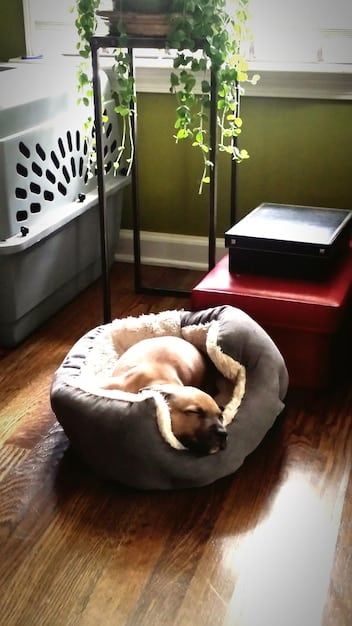
Setting Up a Doggy Safe Haven
Creating a safe haven involves more than just providing a physical space. It’s about creating an environment where your dog genuinely feels secure and relaxed. Add calming aids and distractions to enhance the effect.
- Sound Dampening: Use thick curtains or blankets to minimize external noise.
- White Noise: Play calming music or use a white noise machine to mask firework sounds.
- Distraction: Offer a favorite chew toy or puzzle to keep your dog occupied.
- Stay Calm: Your calm demeanor will reassure your dog that everything is alright.
By creating a safe and comfortable environment, you’re providing your dog with a refuge where they can better cope with the stress and anxiety of fireworks.
The Desensitization Process: Step-by-Step
Desensitization involves gradually exposing your dog to the sounds of fireworks in a controlled and positive manner. This process aims to reduce their fear response over time.
Begin by playing firework sounds at a very low volume while your dog is engaged in a positive activity, such as playing or eating. Gradually increase the volume over several days or weeks, monitoring your dog’s reaction closely.
Implementing a Gradual Exposure Plan
Consistency and patience are key to a successful desensitization program. Follow these steps to gradually introduce your dog to firework sounds:
- Start Low: Begin with the volume barely audible.
- Positive Association: Pair the sounds with treats, praise, or toys.
- Monitor Response: Watch for signs of anxiety, such as panting, pacing, or whining.
- Gradual Increase: Only increase the volume if your dog remains calm.
- Consistency: Practice regularly, even when fireworks aren’t expected.
Remember to proceed at your dog’s pace and avoid pushing them too quickly, as this can reinforce their fear.
Counter-Conditioning Techniques
Counter-conditioning involves changing your dog’s emotional response to fireworks from fear to positive association. This can be achieved by pairing the sound of fireworks with something enjoyable.
Each time your dog hears a firework sound, offer them a high-value treat, such as a piece of chicken or cheese. This helps create a positive association with the noise, gradually reducing their anxiety.
Pairing Fireworks with Positive Experiences
Counter-conditioning is about creating a positive association with a previously feared stimulus. Here are techniques to incorporate into your dog’s desensitization program:
- High-Value Treats: Use treats that your dog loves but doesn’t get regularly.
- Special Toys: Offer a favorite toy that is only brought out during desensitization sessions.
- Playtime: Engage in a fun game or activity while playing firework sounds.
- Affection: Provide gentle petting and soothing words to create a sense of comfort.
By consistently pairing firework sounds with positive experiences, you can help your dog learn that they don’t need to be afraid.
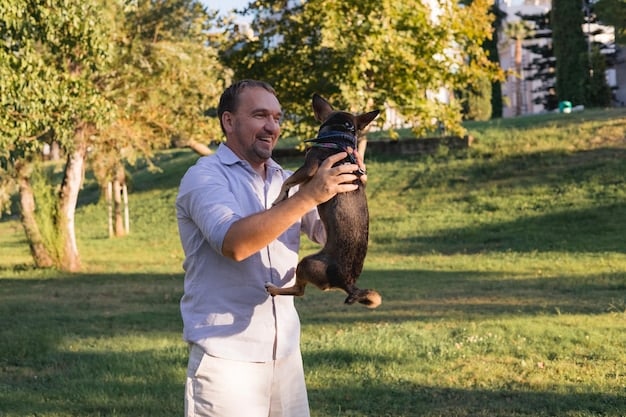
Using Calming Aids and Medications
In some cases, calming aids or medications may be necessary to help manage your dog’s anxiety during fireworks. These options should be discussed with your veterinarian.
Calming aids, such as pheromone diffusers or calming wraps, can help reduce anxiety levels. For more severe cases, your veterinarian may prescribe anti-anxiety medication to be administered before fireworks displays.
Exploring Options for Anxiety Relief
Several options are available to help alleviate your dog’s anxiety during fireworks. Consider the following, always under the guidance of a veterinarian:
- Pheromone Diffusers: Release calming pheromones that can reduce anxiety.
- Calming Wraps: Apply gentle pressure to the body, providing a sense of security.
- Herbal Supplements: Natural remedies like chamomile or valerian root may have calming effects.
- Prescription Medication: Anti-anxiety drugs prescribed by a veterinarian can help manage severe fear.
When choosing a calming aid or medication, consult with your veterinarian to determine the best and safest option for your dog’s specific needs.
What To Do During a Fireworks Display
Even with thorough desensitization, some dogs may still experience anxiety during actual fireworks displays. Knowing how to support your dog during these times is essential.
Stay calm and provide reassurance without coddling your dog’s fear. Maintain a normal routine as much as possible, and ensure they have access to their safe zone. Distract them with toys, treats, or a favorite activity.
Supporting Your Dog During Fireworks
When fireworks are actually going off, consider these strategies to help your dog cope:
- Stay Inside: Keep your dog indoors to minimize exposure to the noise and lights.
- Close Windows and Curtains: Dampen the sounds and block out the flashes.
- Provide Distraction: Engage them in a game, offer a chew toy, or turn on the TV.
- Remain Calm: Your composed demeanor will reassure your dog.
- Avoid Coddling: Offer comfort without reinforcing their fear by overreacting.
By implementing these strategies, you can help your dog navigate through a fireworks display with as little anxiety as possible.
| Key Point | Brief Description |
|---|---|
| 🐶 Understanding Fear | Recognize triggers & sensitivity to noise. |
| 🏡 Safe Environment | Create a calming, secure space for retreat. |
| 🔊 Desensitization | Gradual exposure to firework sounds. |
| 💊 Calming Aids | Consider pheromones or medication if needed. |
Frequently Asked Questions
▼
The desensitization timeline varies depending on the dog’s anxiety level. It can take weeks or months. Patience and consistency are crucial for effectiveness.
▼
Starting early is best. If close to July 4th, manage the environment and use calming aids. Full desensitization may require more time.
▼
If your dog shows increased anxiety, reduce the volume or stop the session. Consult with a vet or trainer for personalized advice.
▼
While any dog can fear fireworks, some breeds with higher anxiety tendencies might be more susceptible. These include herding and sensitive breeds.
▼
Never punish a fearful dog. Punishment increases anxiety and negatively impacts the dog-owner relationship. Instead, provide comfort and positive reinforcement.
Conclusion
Desensitizing your dog to the fear of fireworks is a process that requires patience and dedication, but the results are well worth the effort, leading to a much happier and stress-free life for your beloved companion.


